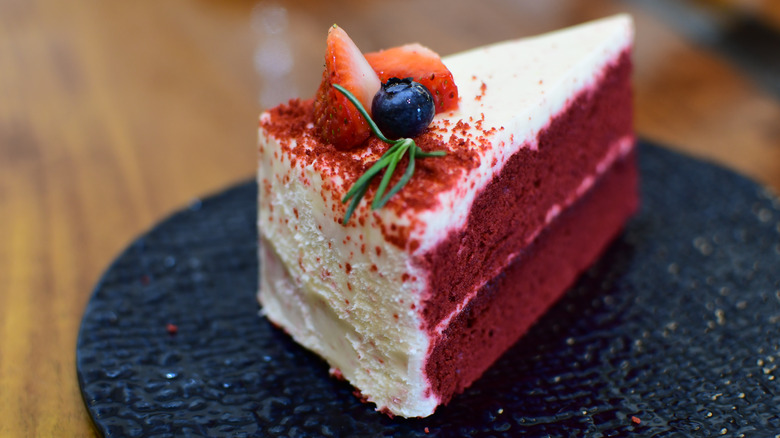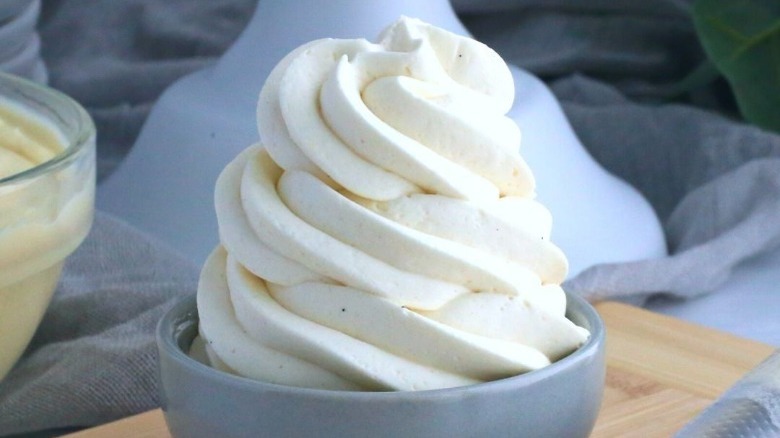What Is Ermine Frosting And Why Should You Use It On Your Next Cake?
While most (all?) of us will have never met a buttercream frosting we didn't like, we'd probably be stunned to find out that there isn't just one or two kinds, there are six, per Serious Eats. And if you live somewhere where the temperatures don't allow you to frost your cakes with the all-popular, mostly-butter American buttercream, there is always ermine frosting.
If you've never heard of ermine frosting before, it may because you've called it something else. MasterClass says the frosting can also be known as "milk frosting, flour frosting, and flour buttercream" — or "cloudburst frosting," per The Kitchn. Ermine can also be known as "American buttercream" although it is made in a different way from its namesake.
While ermine frosting also makes use of butter, it doesn't begin with the ingredient but ends with it. To make ermine frosting, flour and milk are mixed over heat until you've made a roux, per Nigella. Once that is done, granulated sugar is added in and mixed until it dissolves. The whole mixture is then left to cool. Butter is then whipped until it is fluffy, and the milky, sugary paste is added to the butter, a bit at a time, until the whole mixture is light, smooth and fluffy.
Ermine frosting has been around for more than a century
Ermine frosting first began appearing in public as partner to the Mahogany cake, aka America's first chocolate cake in the 1800s, per The Kitchn. Named after the snow white animal, ermine, per MasterClass, the frosting was popular with bakers not only because it didn't need plenty of sugar for it to taste good, but because it was rich, smooth, creamy, and tasty. It was, in short, everything a good frosting ought to be, without the effort needed to generate other more stable buttercream frostings like German, or Swiss, the former of which takes a custard base, and the latter, one made with meringue and melted sugar.
Mahogany cakes may not be as easy to find as its wildly popular descendant — the red velvet cake — is today, but the practice of using ermine frosting continues. Serious Eats' James Beard award-winning pastry chef Stella Parks recommends using ermine frosting not just on red velvet and chocolate cakes, but on strawberry and vanilla cakes which are in need of icing cover, too. Parks admits to having a soft spot for ermine frosting for one important reason: it doesn't use powdered sugar, and she has made no secret of her dislike for the stuff, because of its flavor and its level of sweetness. So if you actively avoid powdered sugar, ermine frosting could be a keeper.

